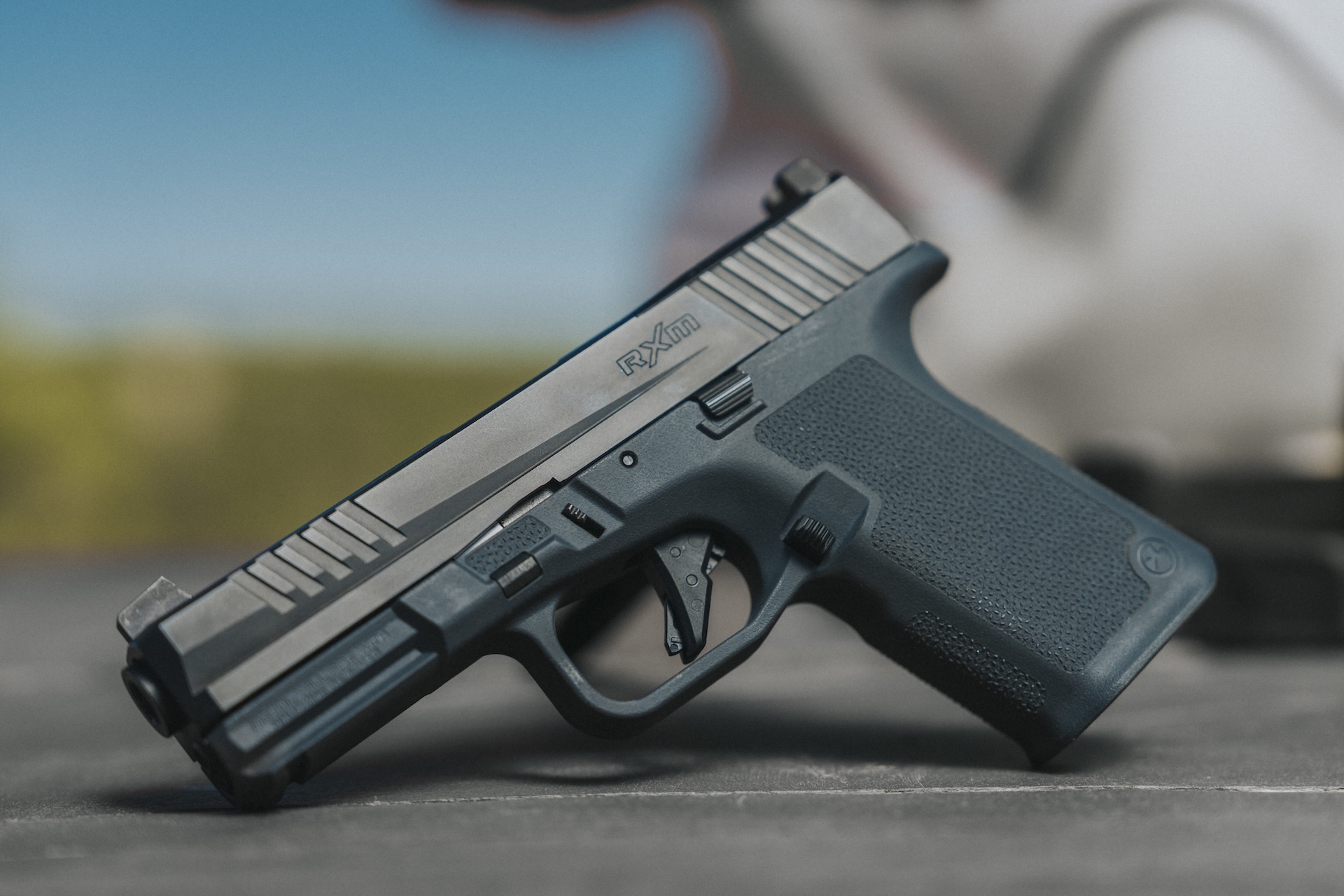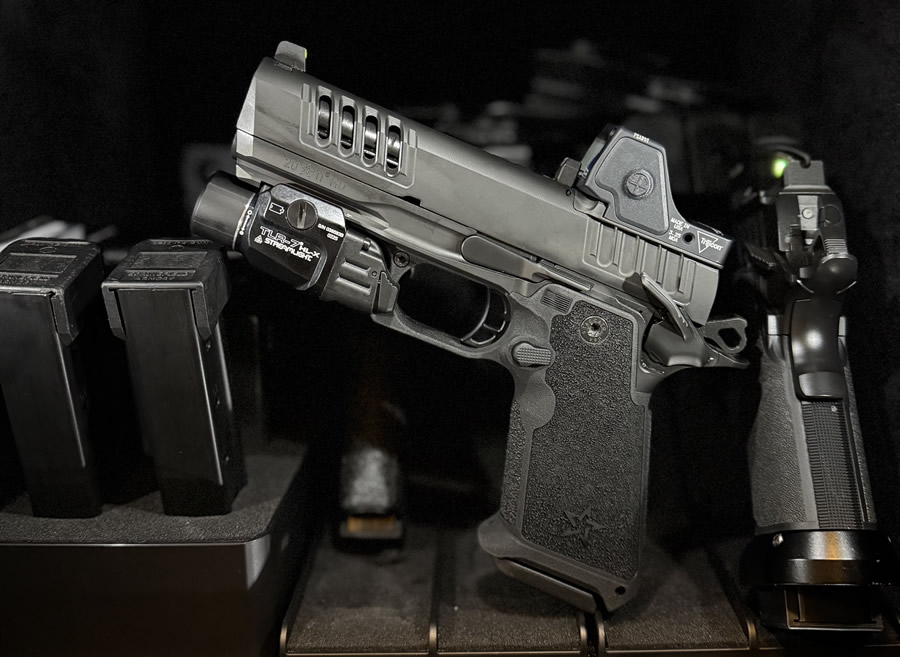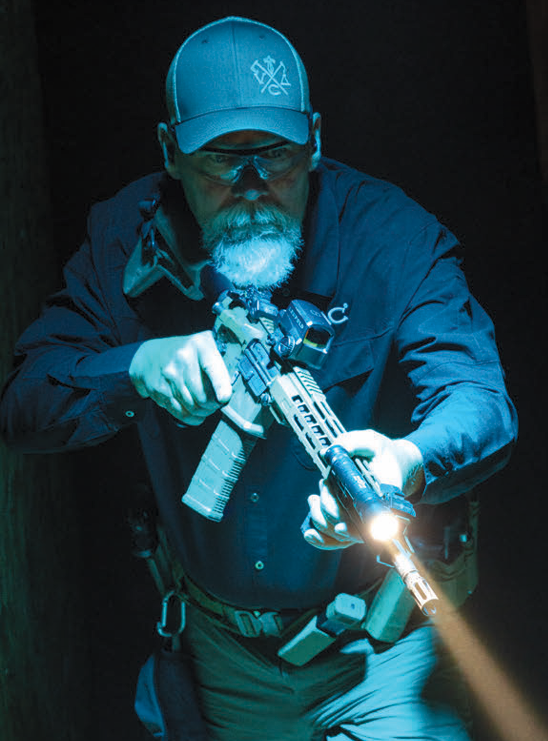The World’s most Powerful Pistol – ‘1847 Walker Revolver’
The iconic Colt 1847 Walker Revolver was the game changer of the old west.
Only about 1100 of the guns were ever made in total, 1,000 of which were for the military, only 100 was for the public.

The Walker Colt saw use in the Mexican-American War and on the Texas frontier. Samuel Walker was carrying two of the revolvers that bore his name when he was killed in battle during the Mexican-American War in 1847.
Youtuber Ian from Forgotten Weapons takes a look at an authentic Colt 1847 Walker Revolver, perhaps best known today as Clint Eastwood’s weapon in “The Outlaw Josey Wales.”
Did you know that this massive cap-and-ball revolver was the most powerful revolver until the modern .357 Magnum cartridge was invented? That truth is certainly quite impressive.
At the time, the Colt 1847 Walker Revolver would have been unlike anything ever experienced before. The massive .44 caliber revolver was meant for taking out mounted opponents on horseback, or the horse itself. These revolvers were hard used, broken, and exploded by soldiers untrained to load them correctly. Not many of these old beastly revolvers survive in great condition.
Special thanks go out to Ian from Forgotten Weapons for bringing this impressive Colt 1847 Walker Revolver out to show us all the features and history of this remarkable weapon.
Video Transcription
Hi guys, thanks again for tuning in to another episode on ForgottenWeapons.com. I’m Ian, and I’m here today at the Rock Island Auctionhouse, I’m checking out some of the guns coming up for sale on their December of 2015 Auction, and one that they have here that’s something cool that I probably should have looked at a long time ago here, but I didn’t, is an authentic, original, Walker 1847 Colt pistol.
Now it’s kinda interesting, Colt has been in the news recently for its most recent bankruptcy fiasco. Well, you know, Colt kind of started as a company with a bankruptcy fiasco. The 1836 Patterson was the first revolver that Sam Colt designed and manufactured; it was really the first revolver on the commercial market here in the US, it was a fairly revolutionary firearm. Now, the revolver concept had existed before, but the Patterson was really an efficient and well-designed pistol for its time. It was the first practical revolver for the civilian market. Unfortunately, it was still a bit fragile, they were a little bit underpowered, they weren’t perfected, and the Patterson didn’t sell very well, and it actually pretty much drove Colt out of business. What rescued him, ultimately, was this guy. Going actually from a small pistol to this massive, humongous chunk of pistol right here.
So what happened was, a guy named Sam Walker, Samuel Walker, had been an officer in the US Army, and he’d been fighting in Florida in the Seminole wars, and he had some experience with Patterson revolvers in combat. And while he recognized their flaws, their being maybe a little delicate, maybe a little underpowered. At the same time, he also recognized that they gave you a massive increase in firepower over a single-shot pistol. For all their problems, he thought they were a gun with a huge amount of potential, and a few years later when he found himself serving in Texas, he actually wrote to Sam Colt to say, you know, ‘hey I like your Patterson revolver, but I have something bigger and better in mind, and I’m wondering if you could make me revolvers for a couple companies of US Mounted Rifles’. So these were guys who were basically cavalry of the era. They had a little carbine, but what walker wanted was a couple of, basically, horse pistols, for each trooper. The idea would be if you have a handgun it would give you six rounds of capacity instead of the typical single-shot from a muzzleloading rifle or carbine, and he had this idea for a single-shot that was powerful enough to kill an enemy horse. Or man. But especially a horse.
So he wrote up all these specifications, sent them to Colt, Colt at this time was in serious financial trouble, and the idea of actually making a military contract was very appealing. So colt went back and forth, the two of them collaborated, they came up with the design for what ultimately became the model of 1847 Walker Revolver. Colt himself referred to this as the Walker Model gun, after Samuel Walker, who was the inspiration and the driving force behind it.
Now, Colt actually got a contract for a thousand of these pistols from the US Military, and interestingly it started out as a thousand guns, each one issued with loading tools and a powder flask, and then the contract was changed partway through production with the idea that they would issue two guns to each soldier, so each soldier only needed one set of loading tools and a powder flask and all of those accouterments, so the profit margin for Colt actually dropped a bit as a result, he wasn’t happy with that. But it was still a good contract.
He ended up making a thousand guns for the military, to be issued in pairs to five-hundred troopers, that was two-hundred per company, so these went to companies A, B, C, D, and E of the US Mounted Rifles. For the record, Company C was Walker’s company. And he [Colt] Also made 100 extra guns for commercial sale. So a total of 1100 of these pistols were originally produced. Now, let’s come back in here a little closer and take an up-close look at this thing, because this is an absolutely ludicrously massive pistol, and it’s really worth a closer look.
Alright, so, the walker here is actually bigger than my camera frame, so let me zoom out a bit more, there we go. So this was actually the most powerful revolver on the market until the introduction of the 357 Magnum in the 1950s, believe it or not. Has a nine-inch barrel on it, a huge cylinder, the whole gun weighs about four and a half pounds, a little more than four and a half pounds, actually, and it will take a powder charge of up to 60 grains of black powder, which is pretty much the same charge you’d put in a rifle. Now it’s not gonna have quite the same ballistics as a rifle, because it does have a cylinder gap, and it does have a much shorter barrel, but on a scale from zero to massive, this thing is just massive. Now, they were made out of iron with a brass trigger guard here.
There were a couple problems with these guns, actually. For one thing, the loading lever here, which you use to ram powder and projectile, the loading levers are retained by this little spring inside this little catch in the loading lever, and that wasn’t sufficient. It didn’t take very long for that spring to get bent, or to lose its tension, and these guns had a tendency every time you pull the trigger for the loading lever to get jarred down like that. So then you’d have to put it back up, troopers would actually sometimes tie these up with thongs of leather, or some of them were modified later to have improved Colt Dragoon-style latches. This was a feature that Colt significantly improved in later versions of the revolver. At any rate, that was one of the issues. One of the other problems was that these actually had a tendency to explode during use, for a couple of reasons.
First off, remember, this is the 1840s, the metallurgey going into these guns isn’t all that great, certainly not by today’s standards, and they’re holding a massive powder charge. Now that’s part of the issue; another part of the issue, something that doesn’t get talked about very much, is that these guns were originally actually issued to be used with what were called ‘pickett bullets’, which is this conical, sharply-pointed projectile. If you think of a candy corn or a traffic cone, that’s kind of the shape of the bullet that was designed to be used in the Walker. Now that bullet had a couple of advantages. Because it was sharply pointed, it actually had very little contact area with the cylinder or the barrel, which meant that you wouldn’t develop quite as high of a pressure. The bullet could accelerate fairly quickly once the powder detonated. Or burned.
The problem was, a lot of the troopers using these revolvers, they were literally the first revolvers they had ever seen. This was new technology to them, and when they got their hands on these bullets, if you try and load it point first, it’s very easy for these bullets to tip to one side or the other, and that’ll totally destroy your accuracy.
If they’re loaded properly and they’re all square and aligned with the bore, they can be very accurate bullets, but when they start tipping different directions when you’re loading them, that all goes out the window. So between that and inexperience, some of the troopers took these bullets and actually loaded them backwards, with the point pointing back towards the shooter, and the flat surface going out the barrel. That’s a lot easier to load effectively and consistently, the problem is, that actually leaves significantly more room in the cylinder for a powder charge; and what these guys would do is, they weren’t exactly going out with exact powder measures, they’d fill up the cylinder. And if you fill up the cylinder with the bullet pointed backwards, that’s more powder and more pressure than the gun was designed to handle. And that was definitely a contributing factor for why so many of these guns exploded. It ended up being about a third of them that went into military issue were returned to Colt for repair for one reason or another.
So these guns were initially delivered to the military in 1848, Walker himself was campaigning down in Mexico when he finally got his pair of the revolvers. He actually died in 1848 with a pair of these revolvers on him. About half of them saw active service in Mexico, and then they came back, and continued to see service with the Texas Rangers– these guns were in pretty much constant use from when they were originally manufactured through…well, at least through the end of the civil war. Because when the civil war broke out, the walker revolvers that were still in Texas were snapped up by the confederate army, and a lot of them saw service in the civil war in confederate hands, and of course these were early high-tech revolvers, they were highly desireable for anyone who was looking for firearms, and these guns tended to just get used and used and used to the point of becoming completely irreparable.
So only about ten to fifteen percent of the original production are still known to exist in collectors’ hands today, and a lot of those show significant wear or replaced parts. It’s not uncommon for the wedges to be replaced, screws sometimes, in this case the loading lever here is actually a modern replacement, which probably explains why this spring is in quite good shape, and it seems like it would be pretty effective. So sometimes you’ll get replacement levers, sometimes you’ll also find the levers to have been modified to the style of the later Colt Dragoons. In this case, all of the markings have worn off this pistol. In fact, you can see the cylinder looks smooth. Originally, Colt actually roll-stamped all of his cylinders with this battle scene of Indians and Texas rangers. And that wasn’t purely for decorative reasons, that was really somewhat of a mark of authenticity. Colt hired a guy who was a really well-known professional engraver who had experience in engraving the stamping machinery for bank notes, and he had these battle scenes engraved for his revolvers, because that was something really difficult for a low-end competitor to duplicate. So if you saw this nicely press-engraved battle scene on the cylinder of your revolver, you could be confident that you were getting a genuine Colt.
Now, on this one, the pistol has been used so heavily that this scene is completely gone, it’s worn off. On the Walkers that roll-stamping was fairly light in the first place, and it’s not at all uncommon to have it completely or partially worn off on these guns today.
However, the markings on this gun have actually been re-cut so that they’re all legible, and it’s interesting: Normally you would expect that the unit mark on the pistol to be something that was done kind of ad-hoc by a unit armorer, but in the case of the Walkers, these unit marks were actually made by the Colt factory, and so they will designate the company and the gun number, somewhere between 1 and 200.
So this guy is revolver number 126, from A Company, and that is going to be marked in a bunch of places on the pistol, kind of like you would expect with a factory serial number. So it’s up here, it’s on the frame, it is actually in veeerry small lettering here on the trigger guard, you’ll find it here on the bottom of the grip -upside down, but…- and then you also have a ‘US’ and an ‘1847’ kind of under the screw on the wedge, right there. So, that unit marking is atypical for guns in general, but that’s actually how the Walkers were done, and like I said, on this one those unit marks were re-engraved so that they’re legible today. Originally they will have been completely worn down just like the cylinder scene.
The one other bit of marking that you’ll have on these is on the top of the barrel flat, where it says Address Samuel Colt, New York City. We don’t get much gun manufacture in New York City these days, but you used to.
So ultimately, the Walker was not produced in particularly large numbers, like I said, only 1100 of them were made initially, but these would go on to financially resurrect the Colt company. These became popular, they became very well-known, especially their association with Texas Rangers, and later guns would start to address some of the issues that made this a bit of an impractical gun. Frankly it was so heavy that it worked really well on holsters mounted to a saddle, not a very good belt gun. Just, again, ludicrously heavy. So, the next pattern guns Colt would make would be the Dragoons, which would have shorter barrels, they would have shorter Cylinders with slightly lower powder charges, especially in 44 caliber, these were still powerful guns, but not to the over-the-top level of the Walkers.
And from there the guns evolved into the 1851 Navy and the 1860 Army, which were some of the most common and the most popular percussion revolvers ever made.
Well thanks for watching, guys, I hope you enjoyed the video. Yet again we have a ludicrously oversized pistol with a relationship to Texas. How strange. At any rate, if you’d like to own this one yourself, Walkers are a massively collectable part of American firearms history.
Sources: Eric Nestor, Forgotten Weapons Youtube









